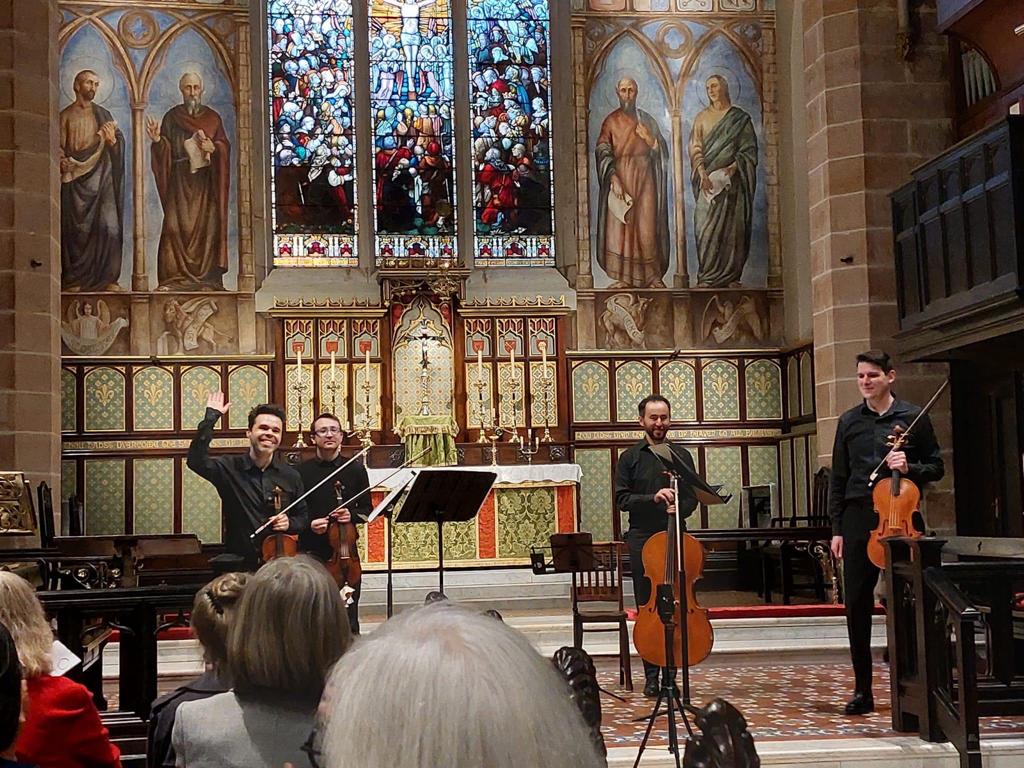Here is a concert program that is as tastefully curated as it was performed.
Traversing the English Baroque, the Romantic period and much in between, The Muffat Collective proved once again that they are a special embellishment to Sydney’s early music scene.
Purcell’s Fantasies were interspersed between the main fare of this concert – the longer string quartets – as tasteful intermezzi. The first was the Fantasy in B flat major, Z. 736 (1680). It is a good example of Purcell’s fondness for dramatic chromaticism, and the lustre of Matthew Greco’s playing cut through the many voices.
Then came Mozart’s String Quartet No 7 in E flat minor KV 160. The last of his ‘Milanese Quartets’, it shows well the Italian influences the young composers evidently picked up during his travels in the South. The Allegro is marked by an unassuming melody that is perfectly genial and always buoyant. The Un poco adagio that follows is, by contrast, regal and almost beyond the composer’s years. I features a short cadenza by Rafael Font on an 18” tenor viola by luthier Simon Brown, which was both virtuosic and tasteful. The Presto was performed with great energy, and the chords were performed with a guttural effect.
We return to the soundworld of the early Baroque with Purcell’s Fantasy in C minor, Z. 738. This piece too shows Italian influences on its composer, with the sequencing and development of each voice harking back to the ricercari of Frescobaldi. The opening is heart-rending, and the lively B-part is more reminiscent of a canzone.
A contrast to this dark, almost brooding, piece is the String Quartet in B flat major Op 5 No 2 by that doyen of the Mannheim School, Franz Xaver Richter. It is a good example of Richter’s skill in creating melodic interest in the lower parts of a string quartet – for instruments often relegated to the drudgery of figured bass. Short duets are exchanged throughout the conversational poco allegro, and the dynamic control of the quartet as a whole was impressive. In the poco andante there was a clear and impeccable solo by Anton Baba on cello, and Richter gave prominence to the cello at least twice in the movement. Greco closed it off with an improvised cadence, played sotto voce. The third and final movement showed that the art of polyphony was not all lost in the new world of Mannheim.
The quick succession of lively voices in Purcell’s Fantasy in F major Z. 737 is again redolent of the canzone form. The melodic lines are inconclusive, yearning to resolve yet continuing to modulate. There is again a contrast between loud and soft, quick and slow, that the ensemble mastered.
Mendelssohn’s String Symphony No 7 in D minor begins thunderously. That motif marks each of the four movements except, perhaps, the genial Andante. The menuetto is just as tempestuous, before it devolves into a whimsical series of shimmering tremolos by Greco. The last movement also has an exhilarating start with each section racing against the other.
The virtuosity of each player was on full display as was the stylistic variety of this Collective. We look forward to the Collective’s next concert, ‘Bach’s Sanguine & Melancholy’, an exploration of the genius of the Bach family.
